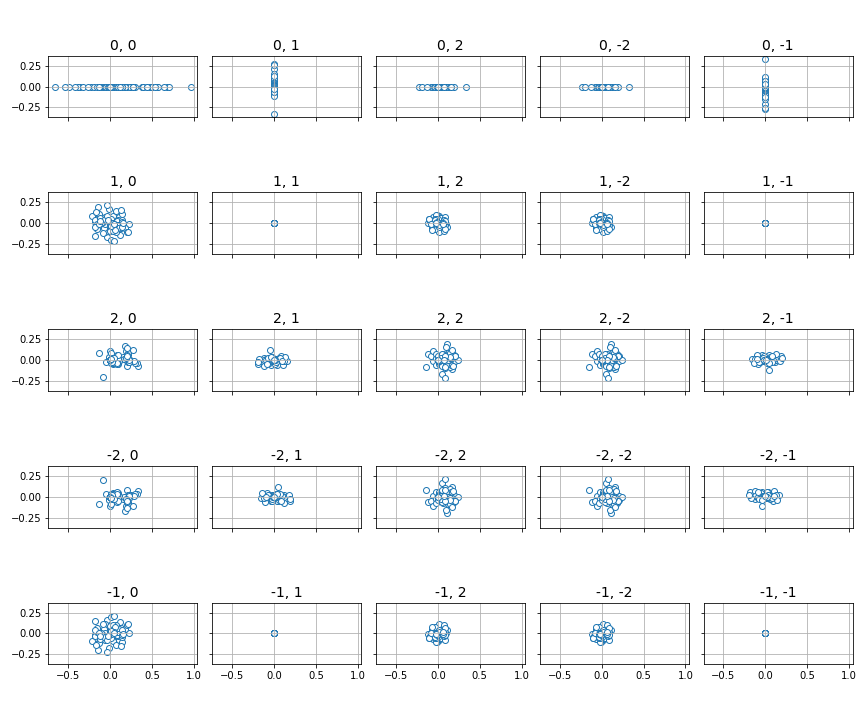qml.fourier.visualize.panel¶
- panel(coeffs, n_inputs, ax, colour=None)[source]¶
Plot a list of sets of coefficients in the complex plane for a 1- or 2-dimensional function.
- Parameters:
coeffs (list[array[complex]]) – A list of sets of Fourier coefficients. The shape of the coefficient arrays must all be either 1- or 2-dimensional, i.e., each array should have shape
(2d + 1,)for the 1-dimensional case, or(2d + 1, 2d + 1)wheredis the degree, i.e., the maximum frequency of present in the coefficients. Such an array may be the output of the numpy/scipyfft/fft2functions, orcoefficients().n_inputs (int) – The number of variables in the function.
ax (array[matplotlib.axes._subplots.AxesSubplot]) – Axis on which to plot. For 1-dimensional data, length must be the number of frequencies. For 2-dimensional data, must be a grid that matches the dimensions of a single set of coefficients.
colour (str) – The outline colour of the points on the plot.
- Returns:
The axes after plotting is complete.
- Return type:
array[matplotlib.axes.Axes]
Example
Suppose we have the following quantum function:
dev = qml.device('default.qubit', wires=2) @qml.qnode(dev) def circuit_with_weights(w, x): qml.RX(x[0], wires=0) qml.RY(x[1], wires=1) qml.CNOT(wires=[1, 0]) qml.Rot(*w[0], wires=0) qml.Rot(*w[1], wires=1) qml.CNOT(wires=[1, 0]) qml.RX(x[0], wires=0) qml.RY(x[1], wires=1) qml.CNOT(wires=[1, 0]) return qml.expval(qml.Z(0))
We would like to compute and plot the distribution of Fourier coefficients for many random values of the weights
w. First, we generate all the coefficients:from functools import partial coeffs = [] n_inputs = 2 degree = 2 for _ in range(100): weights = np.random.normal(0, 1, size=(2, 3)) c = coefficients(partial(circuit_with_weights, weights), n_inputs, degree) coeffs.append(c)
We can now plot by setting up a pair of
matplotlibaxes and passing them to the plotting function. The of axes must be large enough to represent all the available coefficients (in this case, since we have 2 variables and use degree 2, we need a 5x5 grid.>>> import matplotlib.pyplot as plt >>> from pennylane.fourier.visualize import panel >>> fig, ax = plt.subplots(5, 5, figsize=(12, 10), sharex=True, sharey=True) >>> panel(coeffs, n_inputs, ax)
